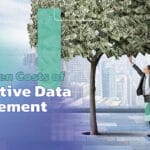Photo by Hillary Ehlen
When we hear the term data analytics we often think about how an organization is doing based on the data that they present or share with their stakeholders. When reviewing data, you can start to pull out trends from month to month and year over year. Knowing and understanding the data helps leaders understand the dynamics of their business, anticipate market shifts and manage risks. This data can be critical when new opportunities present themselves and knowing when to grow your workforce or when to take a step back.
There are so many ways human resources can partner with organizations and leaders to help them achieve their overall business strategic goals. It all comes back to the workforce (the people) to help achieve those goals.
The Human Resources departments are the gatekeepers of key information that can be used when working with leaders on business decisions. Building a partnership with other business leaders and understanding the organization that you support as a human resource business professional will help you understand what data you can bring to help in specific situations. Below are some of the key areas of human resources and how you can use data analytics to help support and drive new ideas for your organization to have a seat at the table when making business decisions.
Turnover, Retention Rates and Market Data
As you’re working with leaders to create a strategy for filling open positions, start thinking about what kind of data you can pull to bring to your planning meeting. Some things I like to start digging into are turnover rates, retention rates, market data and unemployment stats for the specific roles and states you are going to be recruiting for. I would also suggest looking on local job boards to see if other companies have the same or similar job openings and what they are paying and offering as benefits. Having this information helps you think about what things you want to highlight when preparing the posting and when engaging with candidates. You can also pull data from the last time you posted the position and recap what worked, what didn’t work, and if there were any top candidates that you could proactively reach back out to. Bringing data with you to these conversations help you make decisions based on facts.
Employee Drivers
Understanding and knowing what drives employees to stay with your organization is key. We have four generations in the workplace so understanding what each generation is looking for will help drive the different programs your organization will need to maintain or develop.
Reviewing data from stay interviews or doing mini focus groups with your employees will help you determine what path you want to take. Having the data to show the impacts of investing in your employees will help you influence senior level leadership when presenting ideas such as leadership, mentorship, and other training opportunities.
Compensation & Benefits
Having high-quality compensation and benefits programs are essential in not only retaining top talent but also in recruiting top talent to your organization. Understanding what is important to your employees can be found by conducting pulse surveys, focus groups and new hire surveys to understand where you stand from a benefit and compensation perspective. Using the data that you receive will help you understand what areas of opportunities you have. Combining this data into a total rewards packet will help you educate your current employees so they understand the value of their total compensation package and will also help recruit the top talent you are looking for.
Workforce Planning
Workforce planning data is one of the most important pieces an organization can put together to help drive and meet their key performance indicators. Knowing when your long-term employees are approaching retirement and what the hiring needs are of each area can help determine what the future staffing needs will look like to accomplish company goals. Forecasting staffing isn’t something that is new, finance professionals do that from a month to month or year to year basis when projecting where an organization might end up and what it takes to get to their financial goal.
Data helps organizations digitize their processes and improve their customer service interactions. From enabling businesses to make consumer oriented marketing decisions to help them address key operational inefficiencies, analytics is radically changing the perception towards the importance of data. Using data will not only help business leaders make the best decisions but will also help make drive performance.
In summary, if you haven’t already, I challenge business leaders to start asking for data as it relates to your workforce. It will in return help you make better strategic decisions and continue to move your company forward.








